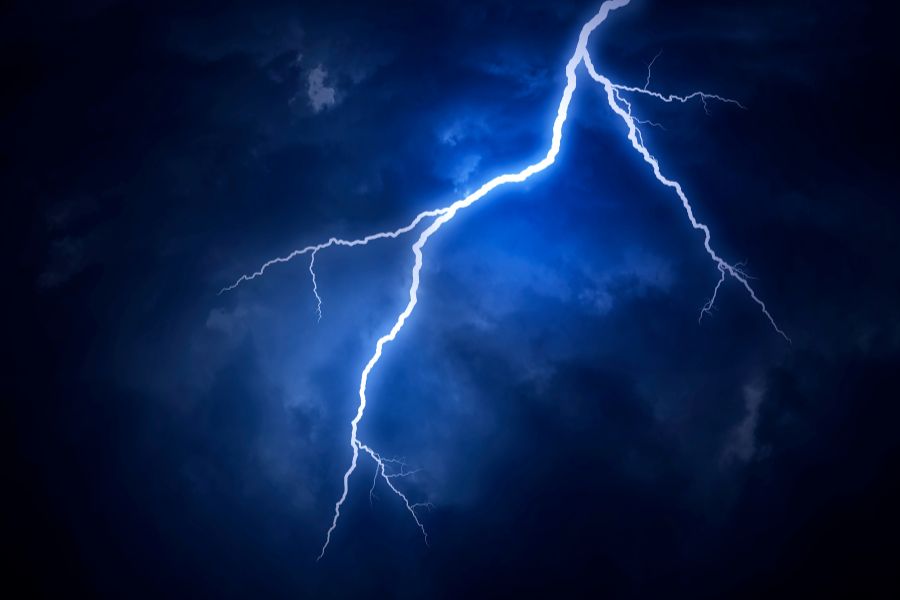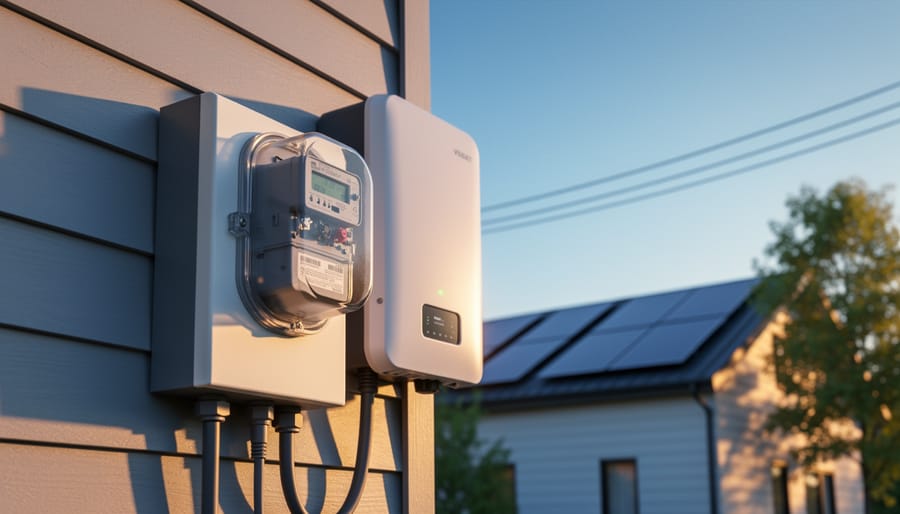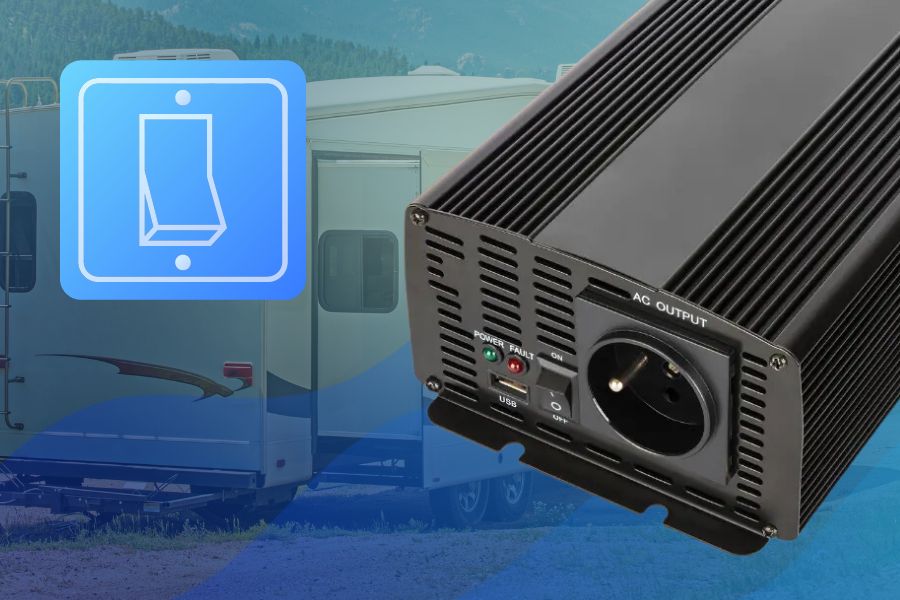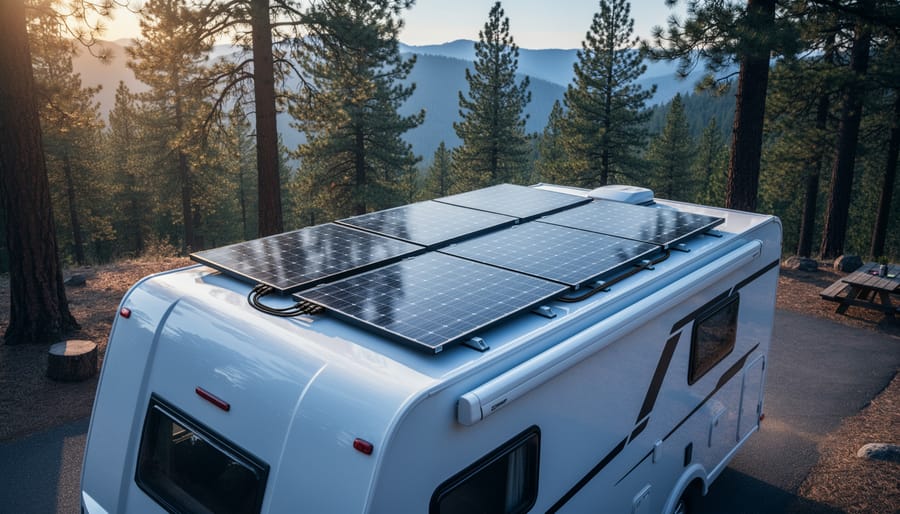How to Reset Inverter Overload
Updated:

When your inverter is overloaded, it can lead to an unmistakable and often annoying beeping sound. It involves steps to reset inverter overload to ensure the device returns to normal operation and avoids potential damage.
Depending on the inverter model, this can involve using a reset button or manually power cycling the device.
This guide will show you easy ways to reset different types of inverters, explain why overloads happen, and answer common questions about inverter overload issues.
How to Soft Reset an Overloaded Inverter
The steps to reset an overloaded inverter depend on whether it has an in-built reset button/switch. Let’s go through both methods:
For Inverters With a Reset Button
- Turn off the inverter and disconnect all connected appliances to remove the load.
- Check battery levels and connections to rule out low voltage issues.
- Allow sufficient time, around 10-15 mins, for the inverter to cool down if overheated.
- Locate the reset button on the inverter, often on the front panel. Refer to the user manual if unsure.
- Press and hold the reset button until the inverter turns off.
- Wait a few minutes before turning on the inverter to allow full reset.
- Reconnect appliances one by one, avoiding overload.
For Inverters Without a Reset Button
Since there’s no reset button, you need to switch the inverter off and then on again.
- Turn off the inverter and disconnect the attached devices.
- Inspect batteries and wiring. Allow time for the inverter to cool down.
- Unplug the inverter from the AC outlet for 5 minutes before reconnecting.
- Switch on the inverter after 5 minutes. The inverter should now reset.
- Slowly reconnect appliances, checking for overloads.
Manual power cycling can clear software glitches or overload faults if your inverter has an inbuilt reset function. Wait sufficient time before turning it back on to allow a proper reboot.
Soft Resetting Specific Inverter Models

Let’s see how to reset inverter overload on popular inverter models.
Resetting a Renogy Inverter
Renogy inverters have a red Fault LED that indicates overheating, over/under voltage, or overload shutdowns. To reset a Renogy inverter after an overload:
- Disconnect all loads from the inverter.
- Turn the inverter’s ON/OFF switch to the “OFF” position.
- Allow the inverter to cool off for 10-15 minutes fully.
- Switch the ON/OFF button back to “ON” to reset the inverter.
Resetting an Ampeak Inverter
For Ampeak inverters, the inverter displays an “OVERLOAD” warning on the inverter screen with an intermittent alarm for 60 seconds. To reset an overloaded Ampeak inverter:
- Immediately power down and disconnect the inverter.
- Reduce the connected loads to below the inverter’s rated capacity.
- Allow the inverter to cool down completely before restarting it.
Resetting a Victron Energy Inverter
Victron Energy inverters indicate overload via an “Overload” LED. To reset, you need to:
- Reduce the excessive load that caused the overload.
- Turn the inverter off and then on again to reset it.
Resetting a Potek Power Inverter
Potek inverters use a red LED to signify overload or power interruption. Once overloaded:
- Switch the inverter OFF using its ON/OFF switch.
- Correct the source of the excessive load.
- Then, turn the inverter ON again to reset it.
Resetting a GIANDEL Inverter
For GIANDEL models, the inverter automatically shuts down during overload, with a continuous buzzer alarm. To reset:
- Disconnect the overloaded appliances.
- Turn the inverter OFF momentarily.
- Turn back ON to reset after removing the excess load.
Resetting an AIMS Power Inverter
AIMS Power inverters show a red LED alarm and may shut down when overloaded. To reset them:
- Power down and turn the inverter OFF.
- Allow time for the inverter to cool completely.
- Carefully restart the inverter, keeping loads within its capacity.
Soft Reset Not Working? Try Hard Reset
Most modern inverters will resolve the overload issue after a soft reset. However, if the soft reset fails to clear your inverter overload, you may need to perform a “hard reset” instead:
- Start by disconnecting the inverter completely—turn off the breaker, disconnect battery terminals, and use the solar panel disconnect system to isolate the inverter from the solar panels.
- Wait at least 5 minutes to discharge capacitors fully.
- Next, reconnect the inverter’s power supply. It should restart without any loads connected.
- Finally, connect devices individually, monitoring power draw to avoid another overload.
This full power cycle forces the inverter to factory default condition, clearing any lingering overload faults.
Common Causes of Inverter Overloads

Inverters, especially solar inverters, are susceptible to overloading due to various factors. An overload occurs when the power demand exceeds the inverter’s rated capacity, triggering its protective mechanisms and causing it to shut down or trip.
Identifying and addressing the root causes of overloading is key to minimizing disruptions and enhancing the reliability of your solar power system.
Connecting Excessive Electrical Loads
Connecting too many high-power appliances and devices to the inverter is one of the most common overloading causes.
Running multiple energy-intensive appliances like air conditioners, heaters, ovens, or heavy machinery simultaneously can rapidly overload an under-sized inverter.
To fix this issue, do the following:
- Audit all your connected loads and calculate the total power consumption. Ensure it stays within 80% of the inverter’s rated capacity for optimal performance.
- Stagger the usage of heavy appliances where possible to avoid simultaneous high demand. Prioritize your loads according to necessity.
- Improve energy efficiency to minimize wastage. Replace old appliances with energy-efficient models to reduce load.
- Disconnect non-essential loads when not in use to provide a buffer for occasional peak demands.
High Starting Current Devices
Certain devices like refrigerators, pumps, and electric motors require more power during start-up. This starting or inrush current can sometimes be up to 10 times the normal operating current.
If the inverter’s surge capacity is insufficient to meet this temporary spike in power demand, it can readily trigger an overload condition.
Here are some prevention tips:
- Refer to appliance manuals and avoid connecting devices with very high starting currents.
- Opt for an inverter with a higher peak power rating to comfortably accommodate starting currents.
- Use a soft starter or inverter with special algorithms to slowly ramp up motor-driven loads.
- Connect devices with high starting currents directly to the AC power supply instead of the inverter output.
Faulty Connections/Incorrect Wiring
Incorrect wiring and loose connections increase resistance in the electrical circuit. This results in excessive heat generation and power loss, forcing the inverter to draw more current to compensate.
To make sure that you don’t end up with faulty wiring, here are some best practices to follow:
- Use the recommended wire gauge and high-quality copper cables to minimize resistance.
- Ensure tight, corrosion-free connections at all terminals. Check wiring periodically.
- Keep cable runs as short as possible to reduce voltage drops.
- Insulate all connections properly to prevent short circuits.
Short Circuits
Short circuits due to faulty wiring, damaged insulation, or loose connections cause sudden current spikes. This excess current flow trips the inverter overload protection.
Here are some tips to avoid short circuits:
- Inspect all wiring thoroughly for defects and replace damaged cables immediately.
- Use proper circuit protection devices like fuses and circuit breakers to contain short circuits.
- Ensure correct polarity of connections and isolate exposed conductors to prevent arcs/sparks.
- Check that appliances are properly earthed and not causing any ground faults.
Lightning Events and Surges

Due to lightning strikes, AC grid power fluctuations, or switching large inductive loads, power surges can overload and potentially damage solar inverters.
Surge protection best practices:
- Install high-quality AC and DC surge power protection devices tailored for solar systems.
- Ensure proper system grounding and use adequate cable shielding.
- Disconnect the AC grid supply before storms to isolate your system.
- Unplug devices from the inverter to protect them from voltage spikes.
Inverter Under-Sizing
An inverter that lacks sufficient wattage capacity for your power needs is naturally prone to recurrent overload tripping.
To prevent under-sizing:
- Accurately estimate your total load requirements without a large safety margin.
- Factor in expected load growth over time as your usage needs evolve.
- Select an inverter model with at least 20% extra capacity than your calculated load as a redundancy buffer.
Battery Problems
In off-grid and hybrid solar systems, battery problems can indirectly contribute to solar inverter overloading.
Some battery-related issues:
- Low battery voltage due to aging or insufficient charging triggers excess current draw.
- Loose or corroded battery connections increase resistance and power loss.
- An undersized battery bank has inadequate capacity, causing deeper discharge and low voltage.
- So remember to inspect your batteries and connections periodically to circumvent these problems.
Prolonged Overloading
Sustained overloading accelerates wear and degrades components over time due to excessive heat build-up and power cycling stress.
Hence, it’s critical to:
- Address overloading causes at the earliest instead of frequently resetting the inverter.
- Allow sufficient rest periods between load usage to prevent overheating damage.
- Stick to the recommended temperature de-rating guidelines for sustained operation at high power.
- If you believe you have a faulty inverter, change it as quickly as possible to avoid damaging other appliances connected to it.
Diagnosing Overload Issues
To properly restore the solar inverter, we must diagnose the root cause properly. Follow these steps for systematic troubleshooting:
Step 1. Test the Inverter Itself
First, eliminate inverter faults by disconnecting all loads and testing. If it still overloads, internal damage is likely. Seek repairs.
Step 2. Test Connected Appliances
Connect appliances one by one to identify any defective units drawing excessive current. Also, check starting and surge ratings.
Step 3. Inspect Wiring
Check cables thoroughly for incorrect wiring, damage, and loose connections that increase resistance. Address issues.
Step 4. Measure Power Draw
Use a power meter to measure current input and output. Any major discrepancy indicates a fault needing correction.
FAQs About Inverter Overload
How Do I Manually Reset My Inverter?
You can manually reset an overloaded inverter by turning it off, disconnecting all loads, allowing time to cool down, and then switching it back on.
Press and hold the reset button if available. Wait 5+ minutes before reconnecting power.
What Happens if I Overload My Inverter?
Overloading your inverter can lead to automatic shutdowns, error codes, reduced battery life, potential device damage, or fire hazards in severe cases.
Overloads negatively impact inverter performance and longevity.
What Is the Use of the Reset Button in Inverter?
The reset button helps restart the inverter after overload-induced auto shutoff.
Pressing the reset button resets the inverter, clearing any temporary faults to resume normal operation after reboot.
How Do I Fix My Inverter Problem?
To fix inverter problems, first reset the inverter correctly. Check wiring, batteries, connected devices, etc., if issues persist, to identify and resolve the fault.
Have a professional inspect the inverter if you can’t diagnose the problem.
Can an Inverter Destroy a Battery?
Yes, frequently overloading an inverter can damage connected batteries by over-discharging them. Low battery voltage further strains the inverter, creating a vicious cycle.
Use adequately sized batteries and avoid overloads to prevent battery damage.









